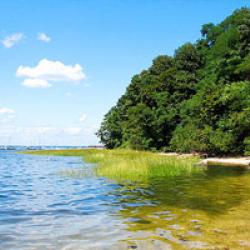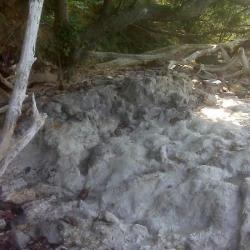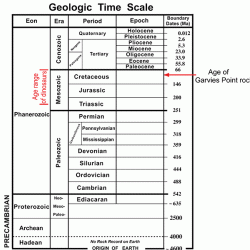Garvies Point Preserve
The youngest rock in New York State dates from the late "Age of Dinosaurs." This rock underlies all of Long Island and part of Staten Island, although it is largely hidden by much younger "Ice Age" sediments and modern development.
One of the few places to see this Late Cretaceous age rock is along the Long Island Sound shoreline at Garvies Point Preserve. Low outcrops and cliffs of clay, soft sandstone, and conglomerate (gravel-type deposits) line parts of the shoreline at Garvies Point. Shore-line erosion means that plant fossils, which include fragments of Earth's oldest flowering trees, pieces of lignite (soft coal composed of plant remains), and pyrite (fool's gold) can be found in the gravel on the beach. In the late 1800s, rocks like those at Garvies Point were used in brick and tile production, and yielded diverse plant fossils from tropical Cretaceous forests that covered southern New York State. No dinosaur fossils were found on Long Island, although Cretaceous age rocks in New Jersey have yielded bones and teeth of dinosaurs and large reptiles.
The rocks at Garvies Point are terrestrial in origin and were deposited on land and in shallow lakes and ponds. These rocks and their fossils represent a time when the Atlantic Ocean was beginning to form—as North America broke away from west Africa along ancient fault lines. Rock samples from drill holes show that the terrestrial rocks at Garvies Point change into shallow marine deposits of the same age further south under Long Island.
NY 11542
United States





